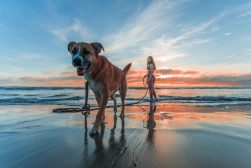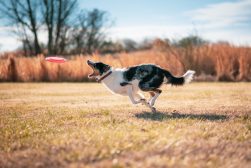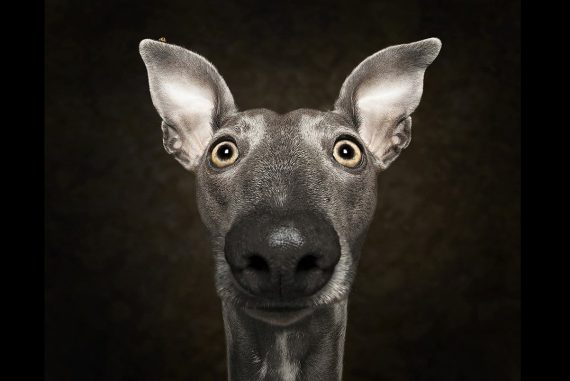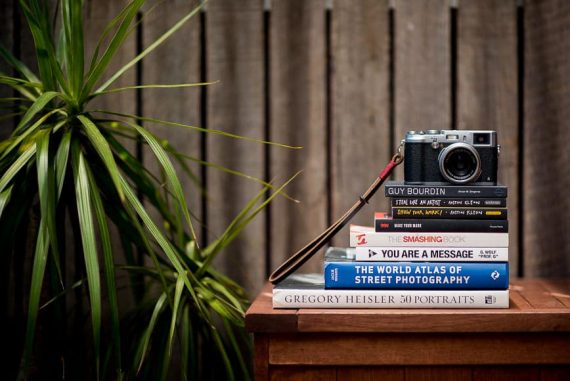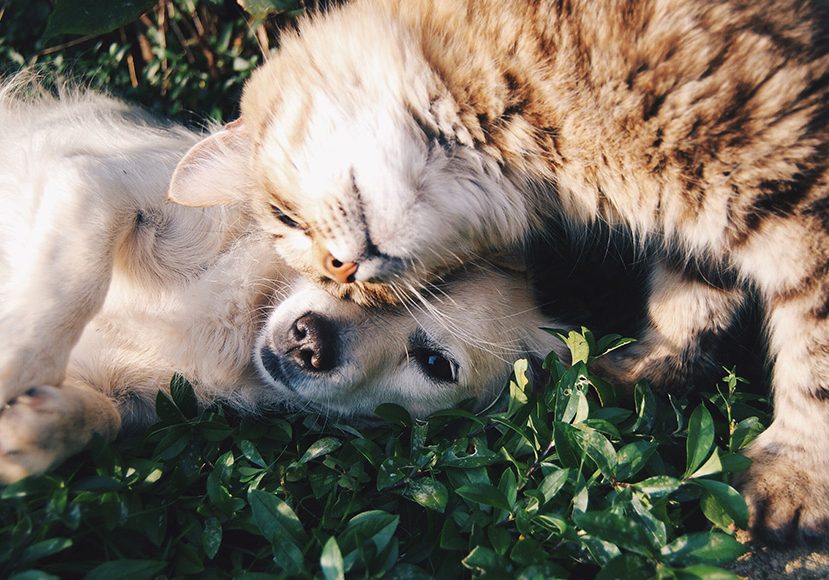
Pet Photography Tips + How to Start a Pet Photo Business in 2023
Your ultimate guide to becoming a pet photographer! Find out camera gear, settings, pro tips plus how to set up your pet photography business.
Learn | Photography Guides | By Ana Mireles
Pet photography has to be one of the most fun photography genres out there!
Whether you’re taking stately pet portraits of dogs or photographing kittens in teacups, there’s never a dull moment!
If you want to nail impressive pictures of your pet, this guide has you covered, with details on what gear to get and camera settings to use.
Plus, if you’re looking to make pet photography your specialty, read on…
We’ve also provided steps on how to set up your pet photography business, including what to charge and how to find clients.
So, let’s get our paws into it :)
Table of Contents
What Equipment Is Needed for Pet Photography?
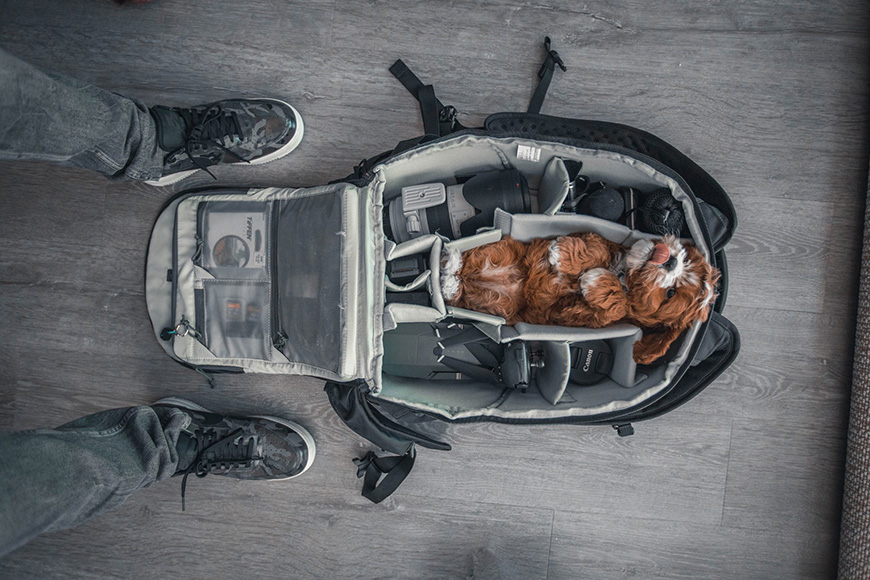
Credit: Roberto Nickson
It is, of course, possible to photograph pets with nothing else than a camera phone. Most pet owners do it.
However, to become a professional photographer, you need better equipment. You’ll need to deliver consistent quality work.
It’s essential that you can deliver to your clients something they can’t do by themselves. Otherwise, why would they hire you?
We all know that the camera doesn’t make the photographer. However, some things can only be done with professional equipment.
Here’s a list of equipment recommended by pet photographers. You can use it as a guide and adapt it to your budget and needs.
What is the best camera for pet photography?
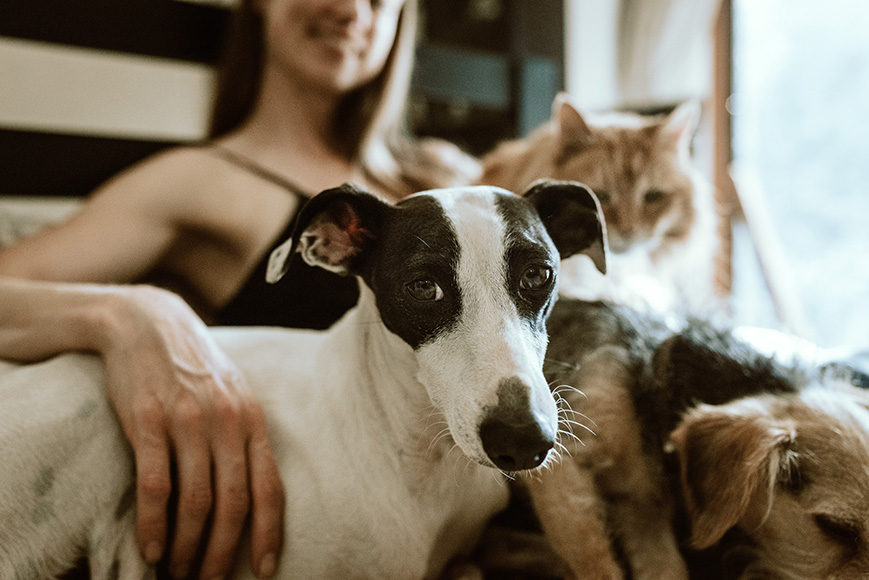
All professional and many semi-professional cameras are suitable for pet photography. There are a few features that make some of them better than others tho.
- The fps of the camera. This refers to how many pictures per second you can shoot. This feature is key for action photos where you use continuous shooting mode.
- Buffer speed. It’s one thing to shoot many photos and another to process them and save them on the SD card. A good buffer speed ensures that your camera won’t have to pause while you’re shooting in burst mode.
- Sensor size and resolution. This will ensure a good-quality image that renders all the details and color gradation.
- Fast AF system. You’ll want an accurate and fast-responding camera to ensure sharp images. It’s especially useful if it supports animal eye-tracking.
Here are some of the best cameras for photographing animals:
- Sony Alpha a6400
- Sony a7R III
- Canon EOS R5
- Canon 6D Mark II
- Nikon D850
- Nikon D3500
If you want to get up close and personal with cats and dogs, without them knowing you’re actually taking a photo, you can even try a pet camera – just don’t expect amazing image quality, but you’ll definitely get something unique.
Cat collar cameras are a fun tool to use as well, giving you some unique POV shots of what your cat gets up to.
What lens is best for pet photography?
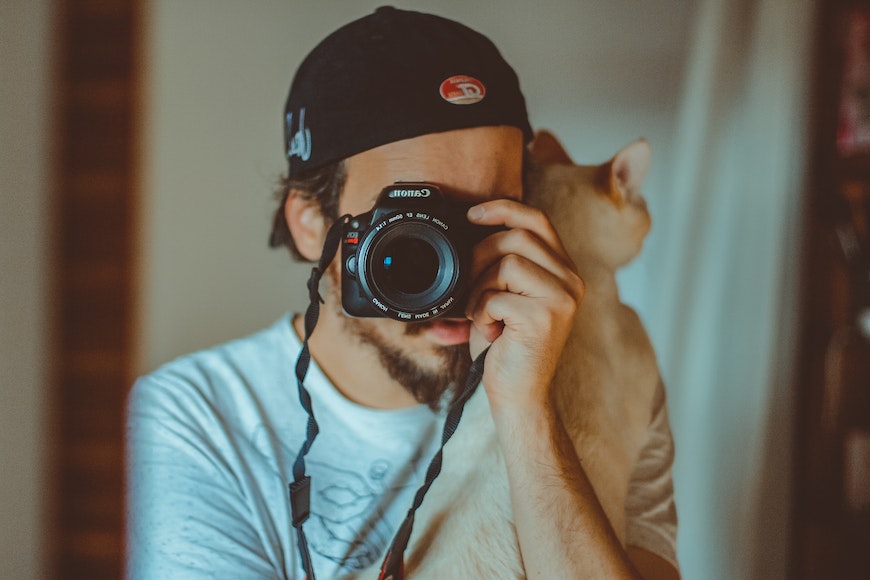
Credit: Lucas Pezeta
There are two types of lenses – prime and zoom. As with many other subjects in photography, there’s a huge debate trying to decide which one is best. In my opinion, there isn’t a clear superiority because they both have pros and cons. As such, the best one depends on what type of photo session you do.
Prime lenses are smaller and lighter, so they are great for going on location. They also have a wider aperture. This is helpful when you shoot in low light conditions, and it helps you to blur the background.
Primes are usually cheaper and deliver great-quality shots. On the downside, you lose versatility. You can only change focal lengths if you bring two or more prime lenses.
Zoom lenses, on the other hand, give you more flexibility. You can switch back and forward through a range of focal lengths. However, even the most expensive ones won’t have as wide an aperture as a prime lens. They are also heavier and more prone to malfunctions due to all the internal parts.
Now that you know the overall characteristics of each one, it’s up to you to decide. You can find a deeper comparison of primes vs zooms in this article if you’re still unsure.
You also need to decide which focal length you need. This also depends on the location and the type of pet. Telephoto lenses are the most popular for pet photography. However, most pet photographers have at least one more. It can either be a normal or wide-angle lens.
Whichever type of lens you choose, there are a few features you need to focus on. First, you’ll want a fast lens. Second, it should have image stabilization. Third, always go for an AF lens.
If you’re looking for a prime lens, these are some of the best:
- Sigma 105 f/1.4
- Sony 135 f/1.8
- Nikon AF-S VR Micro Nikkor 105mm f/2.8G
- Nikon AF-S 50mm f/1.8G
- Nikon Nikkor AF-S DX 35mm f/1.8G
- Canon EF 50mm f/18. STM
- Canon EF 35mm f/2 IS USM
Best zoom alternatives:
- 24-70mm f/2.8
- 70-200mm f/2.8
- 18-135mm f/3.5-5.6
What lighting is best for pet photography?
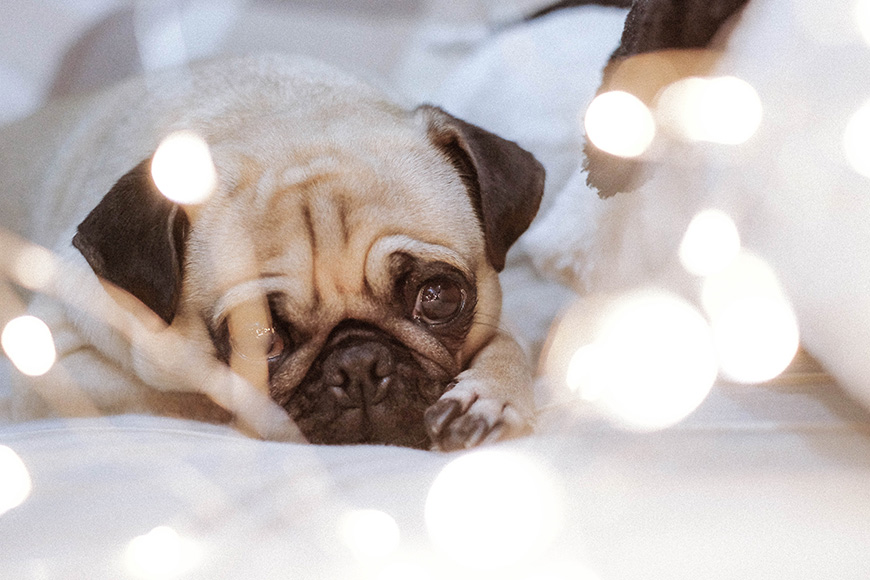
Credit: Mink Mingle
You can do pet photography with natural light, an off-camera flash, or studio strobes. It all depends on the type of images you want to get.
Remember that some animals, such as nervous or shy dogs, don’t react well to flashes. In this case, it’s better to stick with natural light. Otherwise, they won’t relax, and you won’t be able to get good pictures.
If you work outdoors, you’ll usually work only with natural light. However, you can use an off-camera flash when there’s too much contrast. This way, you’ll get some dramatic underexposure skies with a perfectly lit subject.
On the other hand, if you’re a studio pet photographer, you’ll usually be using flashes. This is common for commercial pet portraits.
Other pet photography gear
Here are a few more things that will come in handy as a pet photographer:
- White Balance card
- Cleaning Kit
- SD cards
- An extra battery
- UV filter
- ND filter
- Graduated ND filter
5 Pet Photography Tips for Great Photos of Your Furry Friends
Now that you’re all set up with your gear, here are some pet photography tips to get you started.
1. What are the best camera settings for pet photography?
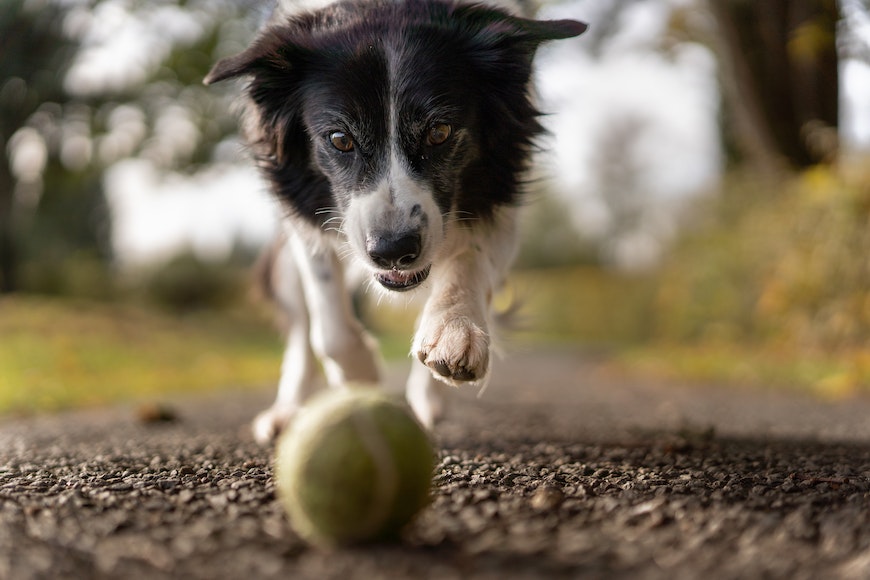
Credit: Alotrobo
The best exposure settings depend on the available light and the type of photography you want.
For example, low-key portraits require different settings than outdoor running shots. So, take this advice only as a starting point.
You’ll need a fast shutter speed. This will help you to have a sharp subject. For example, you should use 1/1000 sec or faster to freeze a running dog.
Instead, you’ll need the shutter speed to be twice your focal length for a pet portrait. Let’s say you’re using a nifty fifty; then you need to set the shutter speed at 1/100 sec.
The aperture should be wide enough to compensate for the fast shutter speed. Also, a blurred background is better for pet photography. A good starting point is to set your lens to the widest aperture and adjust from there. You want to achieve a blurred background and keep the pet in focus.
The ISO is always best to keep low. Use ISO 100 if you have enough light to do so. This way, you’ll avoid any digital noise.
Burst mode is ideal for action photos. If you’re doing portraits, keep the shooting mode to Single Shot. Otherwise, you’ll have to cull hundreds of photos.
Use Continuous Auto-Focus mode. You can find it as AI-Servo on Canon cameras or AF-C in Nikon and other brands. This will track your subject’s movement to keep it sharp.
2. How to keep your pets in focus when taking pictures
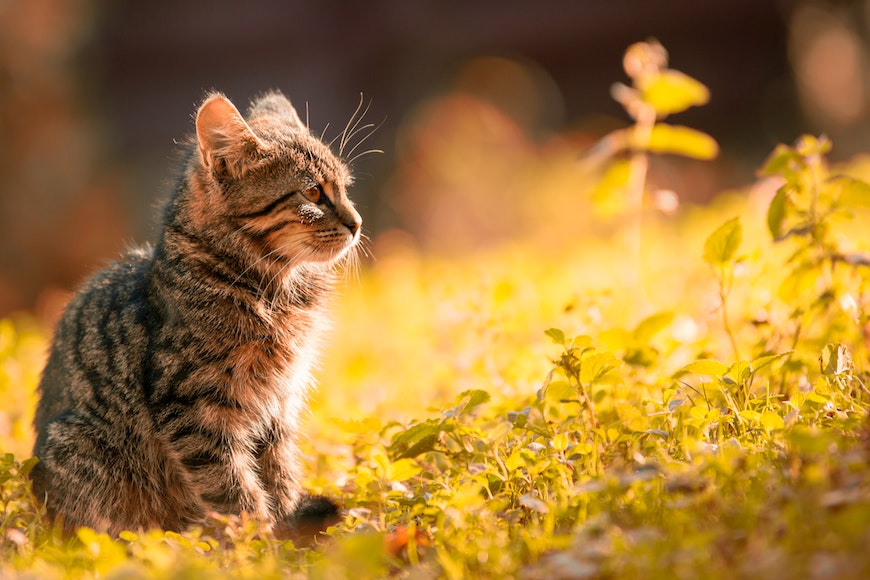
Credit: Septimiu Lupea
One of the hardest things to master in pet photography is to have a sharp subject.
This is one case where using the auto-mode is better than going manual. Animals move fast and erratically; they’re hard to focus manually.
A responsive camera will do great if you choose the right AF mode.
If your camera supports animal eye AF mode, you should use that one, and you won’t have any problems.
Otherwise, use a single-point AF mode. This way, you’ll have more control over the result.
You should consider the composition and the eye level of the animal to decide which focus points to choose.
If the pet is moving, use continuous focus mode. This way, the camera will re-focus as the subject moves.
These are the most recommended settings, but feel free to experiment. Ultimately, the goal is to have the pet’s eyes in focus.
The best way to achieve this is ultimately up to you. It’s always a good idea to read the manual to understand which modes are supported by your camera and how they work.
3. How to get great pet action shots
Let me start by telling you that action shots need lots of practice.
Even the most experienced photographers take many pictures to get a single good image. So, don’t give up if you can’t make it on the first try.
The most popular action images are from dog photography. The ‘run to me’ shot is one of the most trendy, but don’t forget about other animals. Cats make great subjects when playing with a thread or horses jumping an obstacle.
In any case, the location is key. The animal should have enough space to move freely.
Of course, a horse needs more space than a rabbit, so this depends on your subject. That’s why they’re mostly done outdoors, but it’s also possible to do them in the studio.
You’ll need to use a fast shutter speed. So, you need a well-lit environment.
Almost all pet action images use continuous light. That’s because using continuous shooting ensures you capture the perfect moment.
However, it’s also possible to use a flash – as you can see in the video above.
The ideal lens depends on the shot you’re trying to make. However, the most used is a telephoto lens – it can be a prime or a zoom lens.
Unless you’re doing a shot where the cat or the animal is jumping at the camera, it’s better if you’re at their eye level.
4. How do you take creative pet portraits?
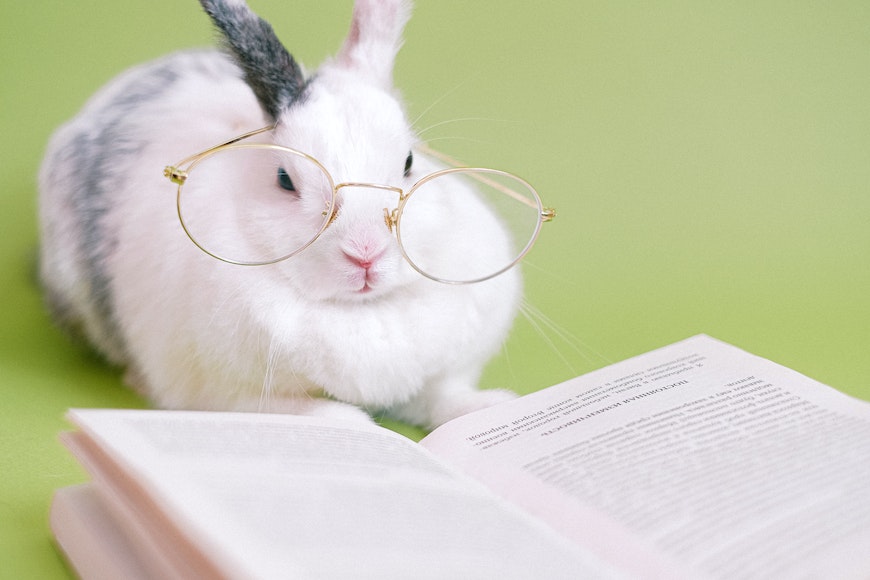
Credit: Anna Shvets
Are you thinking about getting more creative in your portrait photo sessions? You’re not alone.
Creative pet portraits are trending right now, especially in dog photography.
There are different ways to get creative and get beautiful photos. One of the most common is to use costumes and props.
You can also experiment with different angles and focal lengths. For example, photograph pets from the top with a wide angle for a funny portrait. Or from below a glass table to snap their adorable paws.
Light is another element that you can use for your creativity. You can use uneven lighting, for example. Or use color gels.
Whatever you decide to do, ensure it matches the pet’s personality. That’s what will make it a great pet portrait.
5. Try your hand at smartphone pet photography
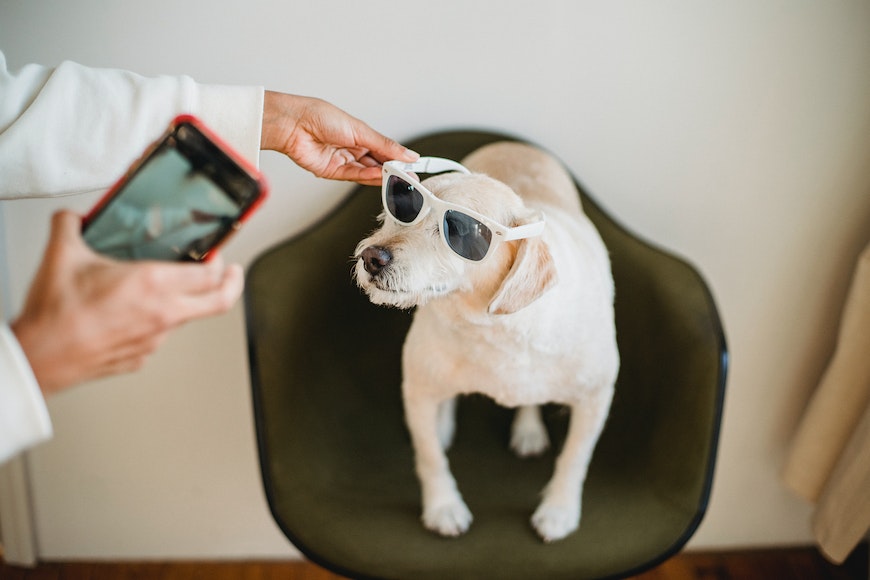
Credit: Samson Katt
Most pet photos done with a smartphone are from cat and dog owners. They are mostly candid shots, meaning you’re dealing with the available light.
To better control the results, use an app that allows manual control of the camera settings.
If you’re doing action shots, use continuous shooting. In most phones, you can activate it by pressing and holding the shutter button.
If you’re doing pet portraits, get at the pet’s eye level. That will get them calm and comfortable. Use a neutral background and soft light. This can be during the golden hour.
Finally, don’t forget about post-processing. You can download a photo editing app to do it.
How To Set Up a Pet Photography Business?
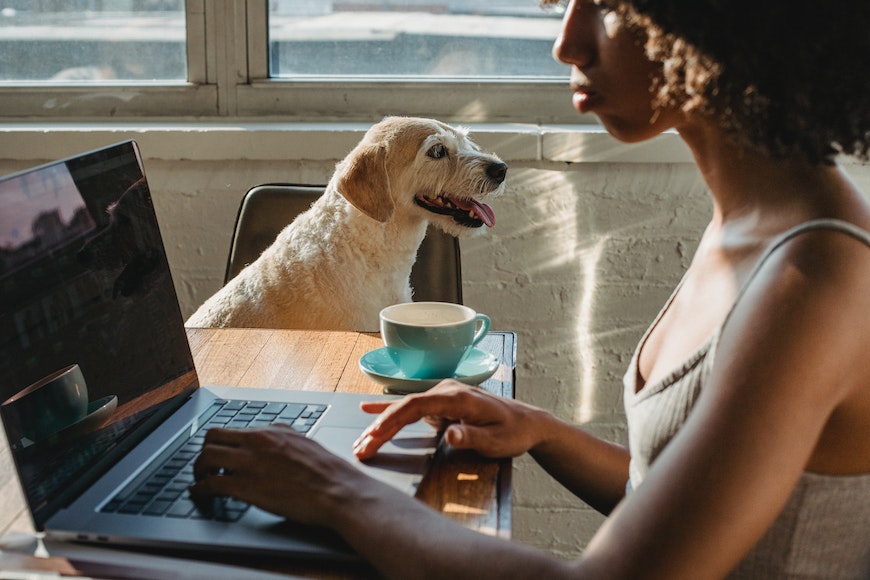
Credit: Samson Katt
It takes more than talent and passion for doing pet photos to actually run a business.
Here are some basic steps to guide you into the professional world with the goal of eventually setting up a pet photography business.
- Create a business plan
In this document, you’ll need to outline your objectives and how to achieve them.
Here, you’ll also lay out your starting and ongoing costs.
You’ll define your target audience and calculate your prices.
This will serve as a guide to keep you focused and grow your business.
It’s also essential if you plan to apply for a loan or attract a business partner.
- Get your gear
You don’t need to buy the most expensive equipment from the first day.
However, you need a starting kit that allows you to deliver images that are worth charging for.
It’s common to underestimate the importance of the equipment.
This is because, as you’ve probably heard – the best camera is the one you own.
This is true to start doing photography and keep on improving your skills.
However, there’s a reason why professional photographers have expensive gear. So, get the best gear that you can afford.
Make sure you don’t offer things you can’t achieve with that equipment.
Last but not least, remember that you can rent equipment if you need it for a special photo shoot.
- Design your pet photography brand
The brand is everything that will make your business unique and recognizable. It starts with the name and logo.
Then, you should keep it consistent through your marketing channels, social media profiles, and website. You can use Shotkit’s branding guide for photographers to build a killer brand to help you out.
- Find your way through the legal and taxes issues
This will be different in each country. So, you’ll have to get informed about the steps you need to take to legally and financially set up your business.
- Get insurance
Once you become a professional, your gear won’t be included in your home insurance. So, you’ll need to protect yourself from loss or damage.
You should also consider general and professional liability insurance, errors and omissions coverage, etc.
This is good practice for all pet photography businesses. Furthermore, in some countries, it might be a legal requirement.
- Build an online presence
Pet photography is a business that can benefit from offline marketing and word of mouth.
However, you still need to build an online presence. You should have a professional website with an online portfolio.
Many photographers create a blog to bring traffic to their websites. You should also have one or more social media profiles.
Check out our guide on how to build a photography portfolio to learn more.
- Start marketing
Once your business is set up, it’s time to start getting clients. You can do offline and online marketing.
Offline marketing could be handing out flyers, leaving business cards at vet clinics and pet stores, attending local events, etc.
Online marketing, instead, is everything you do on the Internet. It implies paid advertising, webinars, special discount codes, building a mailing list, etc.
Is there a market for pet photography?
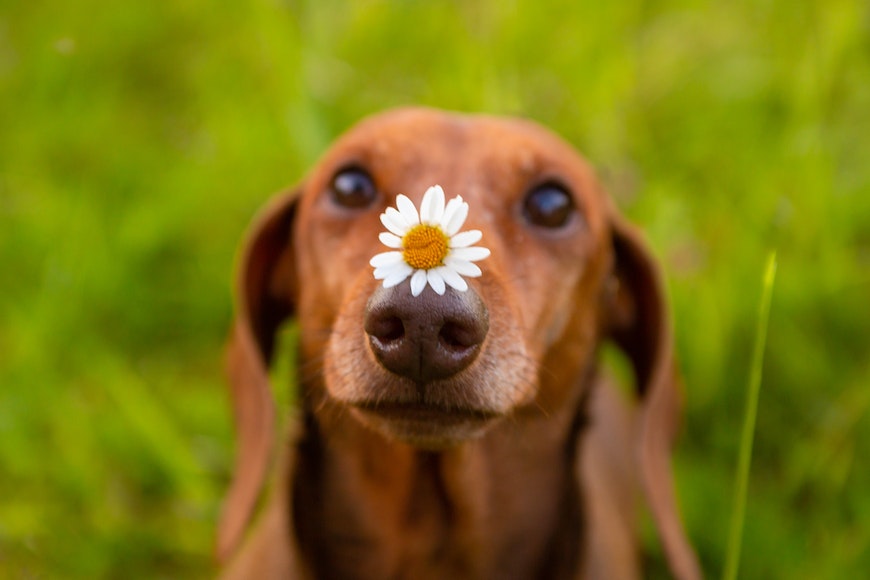
Credit: Nadia Vasil’eva
Yes, pet photography is a booming market. Of course, this might be different according to where you’re based. Generally speaking, though, this is the best time to become a pet photographer.
Think about it. From stores to hotels, everything is becoming pet friendly. People are opening Instagram accounts for their pets and buying gadgets, gourmet food, etc.
Pets have become an essential part of our families. As such, we want to capture special memories with them.
To understand if there’s a market in your area, start by choosing your speciality.
Do you want to do dog photography or horse photography? Are you looking to photograph people with their own pets?
Or do you want to do commercial photography with trained animals?
Once you figure that out, it will be easier to determine who’s your client. Analyze if there are enough potential clients in your area.
You’ll also need to know who’s your competition. See if there are enough clients for all of you and how you will stand out.
What should I charge for pet photography?
The first step in building a pricing list is to be aware of your yearly expenses.
Then, decide how much you want your profit to be and add it to your expenses.
Then, divide that by the number of sessions you can do per year, and that’s your price.
Once you know how much you would like to charge, you need to see if your pricing meets the market.
Research to see what other professional photographers in your area are charging.
You should also interview some potential clients to understand their means and needs.
Figure out how much they would be willing to pay.
Finally, make sure that the quality of your services is adequate to your fees.
How do pet photographers get clients?
You can start by approaching your neighbours or pet owners in your area.
For example, if you’re a dog photographer, you can start by doing dog photos at the local park.
As you know, dog owners share information on services they’ve liked. So this can get word of mouth going.
You can even encourage it by offering referral discount codes.
Another way to market offline is to leave brochures at local businesses.
For example, at the vet or pet stores for cat and dog photography.
Instead, you can go to riding schools and sports shops for horse photography. It depends on where your potential customers go.
That’s why it’s important to identify your target audience.
You can take advantage of many free tools to market online. For example, launch a contest on your social media.
Also, write a blog on your website that would answer questions your potential client might be googling. This way, you’ll show up on their search results.
There are many ways to market as a photographer. You can find more photography marketing ideas in this article.
Pet Photography FAQs
How do you take good pictures of pets?
Use natural light, for example, the golden hour. Find a neutral background and blur it to create separation. You can do this by using a wide aperture. If you don’t know how to use the camera in manual, use the semi-automatic mode, Aperture Priority. Also, try different angles to find the best one.
What makes successful pet photography?
Successful pet photography is the one that captures the best moments. It should also reflect the personality of the animal. If the owner is in the picture, it should reflect their relationship too. The world is full of cat images and dog photos. A successful one is the one that stands out amongst them.
Is pet photography profitable?
Yes, pet photography can be very profitable. However, you need more than talent to make a living out of it – but that’s true for almost anything. You’ll deliver good results if you have the equipment and the skills. Once you have that, you’ll need to market yourself and give excellent customer service.
Final Words on Becoming a Pet Photographer
I know any cat or dog lover photographer has thought about becoming a professional – after all, what better way to celebrate your passion for pets and your photography skills?
I hope these pet photography tips gave you an idea of how to realise your dreams.
Let us know in the comments what other photography tips you have for beginner pet photographers.







